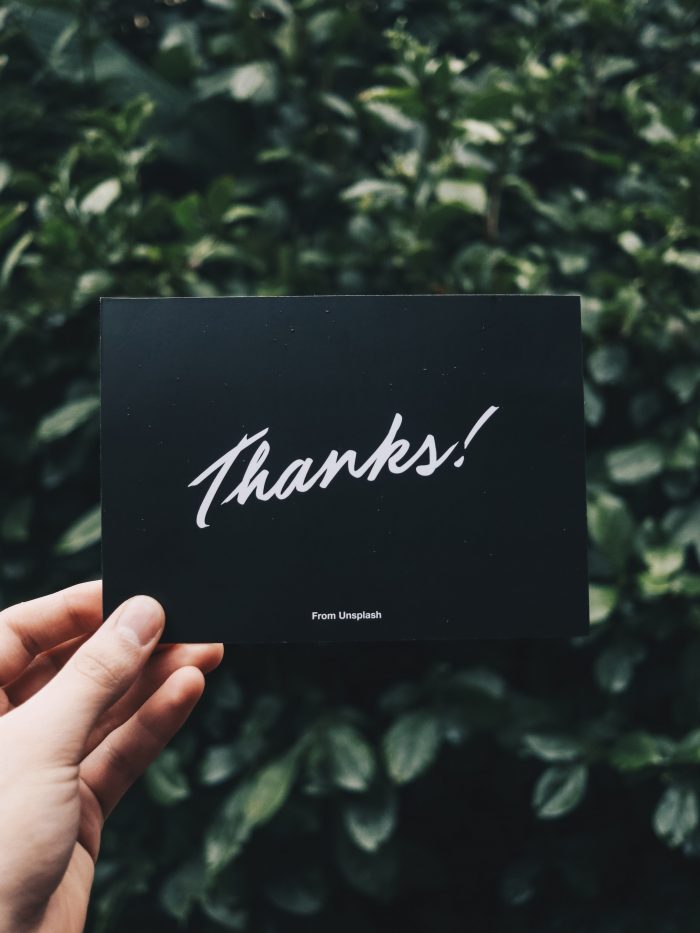A.T. Cross Company, LLC
Tips on Creating Personalized Thank You Cards that Separate You from the Pack
You don’t have to be an etiquette expert, a paper snob or a snail mail fanatic to know that sending out personalized thank you cards is one of the simplest things you can do to show your gratitude and express yourself at the same time. Card-making has come a long way from the rubber stamps and thick fiber paper of yesteryear, and thanks to cool new tools and techniques, modern cards made at home look anything but homemade. With the right card-making supplies, easy-to-master calligraphy tools and a little bit of creative vision, you can make your own bespoke thank you cards that look like they belong in the poshest urban paperie.
Designing the Front and Inside of Your Cards
- Let there be Letterpress—At-home letterpress has long alluded DIY’ers who understand the luxury of good pressing. While the kinks haven’t been entirely ironed out, there are finally some ways you can achieve the deep, dimensional look of this technique at home. For non-custom designs, you can use a simple letterpress kit and platform from the craft store coupled with printing plates. It’s not easy to make custom pressing plates at home, but there are services like Boxcar Press for that. They’ll make your custom letterpress plate relatively affordable.
- Go for Gold Foil—Like letter pressing, gold foil was once a luxury relegated only to professional card-makers. But people who are patient enough can master this technique for some next-level DIY thank you cards. Gold foiling is the process of adding a metallic sheen, usually using gold foiled paper, to words and design elements for a more luxurious feel. There are dozens of tutorials out there about how to achieve pro-looking gold foil, including ones that use supplies you already probably have lying around the house.
- Dimensional Detailing—You don’t have to carve a mini-paper masterpiece like the ones you see on those (actually unbelievable) pop-up greeting cards but adding a tiny bit of dimension to the front of your card is a fun way to break the mold. There are dozens of ways you can do this, but we’re fans of incorporating different paper textures, fabrics, and charms into a design to give it a little pop of excitement. Shape punches are great to have on hand if you’d like to add some layers but still want your cards to feel uniform.
- Hello, Hand-Lettering—Once you learn how to hand-letter, you’ll never want to stop making cards. The beauty of this skill is that it’s inherently customizable. You can make the front and insides of your cards say whatever you want without the need to order or print customized elements. On top of that, you don’t need a ton to get started beside some proper writing utensils and the patience to learn.
- Be Particular About Paper—The quality of your thank you cards is determined by a variety of factors, but the most significant is undoubtedly the weight of your paper. Cards are traditionally made with medium-weight cardstock, ranging from 65- to 80-pound paper, but choosing an even heavier weight (100-pound and above)may give your card the feel of higher quality. Choosing the right paper and finish can ensure a better result if you’re painting or lettering. For example, a glossy finish paper may cause fountain pen ink to bleed or smear.
The Frills That People Notice
- Luxurious, Lined Envelopes—The devil’s in the details, they say, and nothing screams detailed decadence quite like lined envelopes. We love to see creative crafters use unique printed paper—perhaps even matte wrapping paper, like the to-die-for collection from Rifle—to line their envelopes to create a little something special during the opening process. Choosing the right color, pattern or texture to complement your cards and envelopes is half the fun! This is one of those little things that’s a bit of extra work but so worth it!
- Calling all Calligraphers—Just as hand-lettering sets your cards apart, so too does addressing your envelopes in calligraphy. Think of the addressing process as an art in and of itself. You want to create an elegant, eye-catching design that makes your recipient want to open it immediately! Once you understand the fundamentals of hand-lettering or calligraphy, you can use your creative license to execute however looks best. There are some great addressing tools out there, including neat little gadgets that help you hand-letter your addresses neatly in a straight line.
- Return Address Goodness—We love the idea of making your return addresses uniform across all mailings, but there’s something cheap- and quick-looking about typical return address labels you can buy or print at home. On the other hand, lettering your own address or investing in a bespoke return address stamp can add a little extra style and flourish to go with your one-of-a-kind card creations.
- Fancy-Schmancy Finishes—You know those waxy, round, imprinted labels you sometimes see on fancy bottles of wine? Those are called wax seals, and they’ll pretty much make you look like royalty when you use them to close your thank you card envelopes. The cool thing about this technique is that you can do it yourself pretty quickly, but you need to invest in a wax seal stamp (or make your own, if you’re feeling ambitious) to create your custom look. Then all you need to do is melt some hot wax at the opening of your envelope and mark it with the stamp!
If crafting’s your thing, there’s no better way to show your skill and unload some creative energy than by making your own cards. And as you’ll see from scouring your favorite card stores and Etsy shops, high-quality cards—especially gold-foiled, letterpress and hand-lettered cards—don’t come cheap. Learning some of these card-making basics will help you make luxurious thank you cards at a fraction of the cost.

